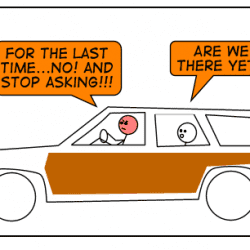Churches should address addiction

One of the things that we speak about with church leaders is the importance of churches responding with compassion, support and honesty about the issues of addiction.
We presented some chilling statistics in a recent workshop about how widespread addictions – from sexual, gambling and alcohol to drugs and even debt – are among all walks of life, when this woman raised her hand.
“I’m sure this is all out there,” sighed one woman, “but I just don’t have any experience with addiction.”
Seriously?
Let’s consider some national trends with respect to what I’ll call an “average” congregation of approximately 100 people, 20 of whom are youth or young adults.
Of those 20 young people, two or three struggle with eating disorders that threaten their long-term health. Four or five of them have what would be clinically diagnosed as a chronic substance-abuse problem, as do about 14 of the adults in the church. At least one of these kids is hooked on illegal drugs, along with three adults.
Nine of the young people in this church binge-drink, three of whom drink heavily on a regular basis. Twelve of them will begin experimenting with alcohol before they reach age 16. Odds are that at least one of these young people will be among the 4 million people between the ages of 18 and 25 who serve prison time for crimes related to their dependence.
More than 50 of the members of this average church have an immediate family member who struggles with alcohol addiction, and nine of the adults sitting in the pews live with what would be clinically diagnosed as an alcohol disorder. Within the span of one generation, one person from this church will die from an alcohol-related incident.
Two people out of this typical 100 have a serious gambling problem, and another seven teeter on the edge of pathological gambling. Twenty or so are addicted to nicotine, more than 60 are technically overweight, and 15 are clinically obese.
Seventy percent of the men between the ages of 18 and 34 in the church view at least one Internet pornography site weekly. Ten people are Internet porn addicts, three of whom are women. More than half of the young people will have sex with multiple partners while under the influence of alcohol.
The average twenty- and thirty-something in this church carry credit-card debt of at least $4,000, an increase of 55 percent over a decade ago. Average college students carry credit-card debt of almost $3,000 a month. The average young family spends at least one-fifth of its monthly income trying to keep up with this debt, and one in five young families who make less than $50,000 a year spend as much as 40 percent of their income on such debt.
My statistics are drawn from a variety of sources, which I’d be happy to provide to interested readers.
Why don’t we know about these problems more in our churches? Perhaps it’s the climate of shame, judgment and condemnation people face if they bring their deepest problems to the fore. Somehow, somewhere, we got the message that we should be in perfect working order before coming to church, or if not, we ought to be well-versed in hiding our flaws.
It’s incumbent upon us to give people permission to bring their brokenness to church, not just to be fixed, but to be loved, even in their brokenness. And if we’re putting too much effort into appearing to be anything more than similarly broken vessels, we’re guilty of contributing to the climate of intolerance that drives so many people underground, or completely away, from church.
Finally, if by some statistical anomaly, any given church truly doesn’t have these issues in their midst, I would ask why not. If no one in your congregation is struggling with past or present addiction issues, why aren’t you out there, reaching out to those millions of people who need you?
If the face of your church doesn’t reflect that of the greater community, problems and all, it’s time for a face-lift.











